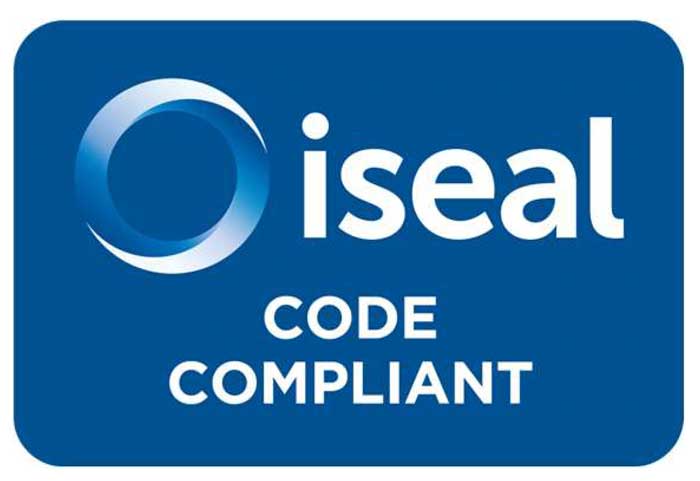Dialogue as a Central Element of ASI’s Complaints Mechanism
ASI’s Complaints Mechanism places dialogue at the heart of resolving issues, fostering understanding and solutions between stakeholders.
8 August 2025
The cases outlined below illustrate how ASI encourages dialogue between the parties involved, whether as part of a formal complaints process or outside of it. The ASI complaints toolbox lists dialogue processes as one tool that can be used to react when a complaint is received. Dialogue also constitutes the first element in the complaints management process described in the Complaints Mechanism. Ideally, disputes should be resolved at the lowest and most appropriate level, possibly with the help of ASI acting as a facilitator. Sometimes, such dialogue won’t be possible because of fear of reprisals and/or because the complainant prefers to stay anonymous. In this latter case, ASI will treat the complaint with confidentiality and respect the claimant’s wish not to have his/her identity disclosed. ASI will, however, act as transmitter of the information received and will try to shed light on the details, history and context of the complaint in a transparent manner. In a process that can, at times, be lengthy, ASI will work to establish a shared understanding of the complaint and work towards feasible solutions with all parties.
In particular, when Indigenous Peoples or local communities are involved, engagement might require targeted strategies to ensure that relevant information is accessible and effectively reaches all stakeholders. This includes ensuring that gender and cultural considerations are taken adequately into account, and that language and literacy are not barriers to engaging in the process. The ASI Indigenous Peoples Advisory Forum (IPAF) provides support for such processes and the communities involved.
A prominent case in which an Indigenous community filed a complaint relates to the Sámi in Norway. At the heart of the case is a wind farm that is threatening the Sámi livelihood by impacting on reindeer herding migration patterns. An ASI member company is the sole purchaser of the produced energy when the complaint was received. The complainant considered two options for progressing under the Complaints Mechanism, namely either a formal written complaint procedure or an ASI-facilitated dialogue. It was agreed to pursue the more informal dialogue process, while retaining the option to escalate to a formal written complaint’s procedure. ASI then facilitated virtual and in-person meetings between Sámi representatives and the ASI member over the course of a year, providing an opportunity to establish a rapport and build relationships. This process eventually led to an in-person meeting between the parties in the Indigenous territory during which the stakeholders established more positive relations, were able to better understand each other’s perspectives and explored possible pathways for remedy. The case is pending legal settlement between the Sámi and the wind farm operator before the Norwegian courts.
Another ongoing case concerns various Indigenous communities in Brazil who decided to make an anonymous complaint against an ASI member. At stake is the alleged “violation of rights and environmental damage” related to issues such as community participation, access to forests, water pollution, emissions and operational safety. Time-wise, the complaint coincided with a planned ASI audit, during which the contentious issues could be examined. Shortly before the audit, a legal aid organisation submitted a related complaint mainly concerning consultation modalities during the audit. What followed was that ASI is conducting a mediated dialogue with both claimants (who later joined their complaints) and the Brazil-based ASI member company. Respecting anonymity of the main claimant, ASI is operating as a bridge builder between the parties, relaying proposals to mend the situation and to shed light on unclear issues.
The ASI Complaints Mechanism is the key instrument for stakeholders to raise issues, have them investigated and addressed appropriately. Since it was updated in 2024, IPAF members have submitted complaints about a number of ASI Members in both Australia and Guinea. According to the complainants, the Members’ complaints mechanisms were either not clear, accessible, or effective at resolving issues. Local communities have complained that they are not being heard by the companies. As a way forward, ASI has been engaging with Member companies in constructive dialogue to discuss these concerns and work with them regarding their complaints mechanism to better understand some of the shortfalls. Most companies then undertook a complete review of their complaints mechanism, identified key areas for improvement, updated their mechanism and provided training to their community relations staff to support more effective implementation of the complaint mechanism. The fundamental changes included improved communications aspects such as raising awareness of how communities can access the complaints process, notifying the complainant of the complaint’s receipt, and informing them of the timeframes and communication channels for the further procedure. For all companies, these changes resulted in better community dialogue and much clearer access to and resolution of complaints or issues raised.
ASI appreciates these developments and encourages stakeholders to voice their grievances either formally or informally. For ASI, receiving, reviewing and acting upon complaints via its Complaints Mechanism is an important way for ASI to improve its processes, and is fundamental for meeting its mission relating to the responsible production, sourcing and stewardship of aluminium.
More information
SHARE THIS ARTICLE


